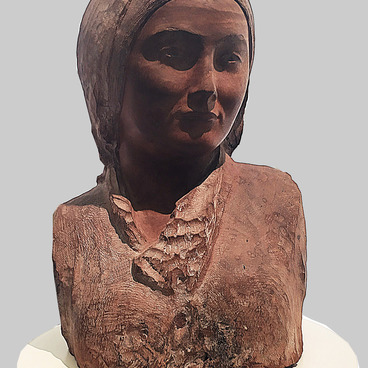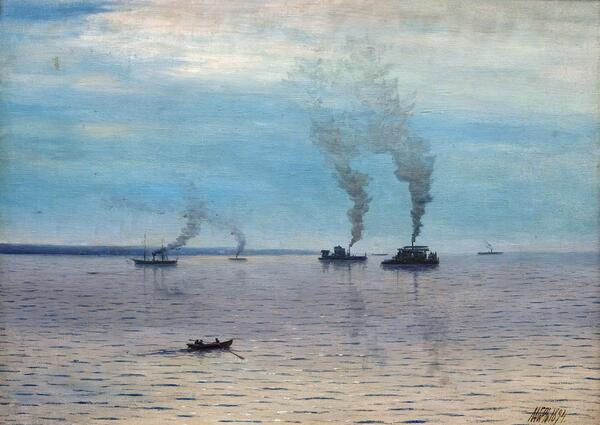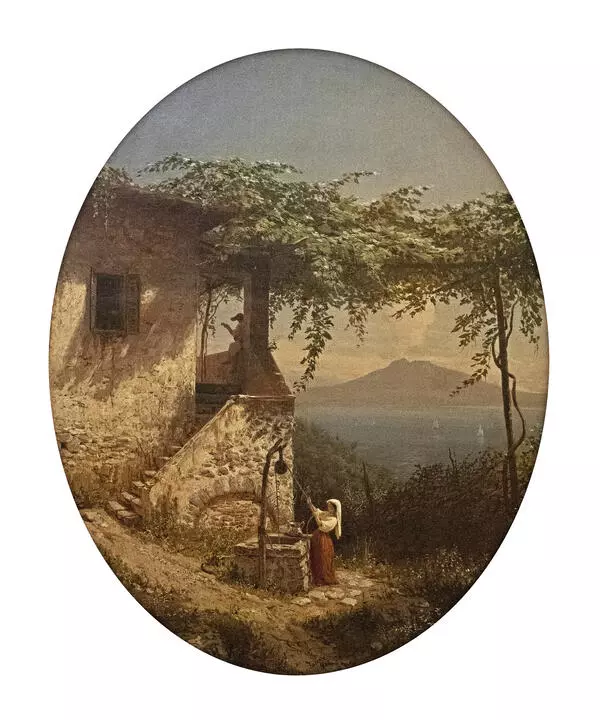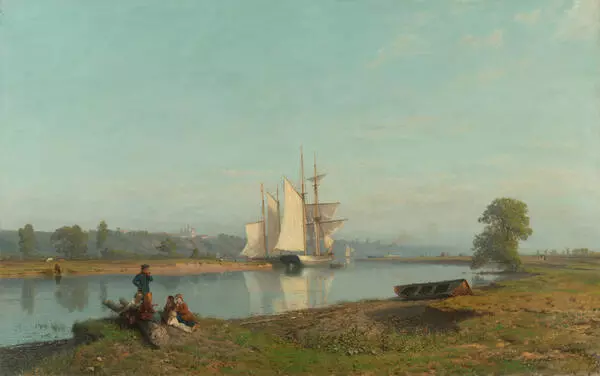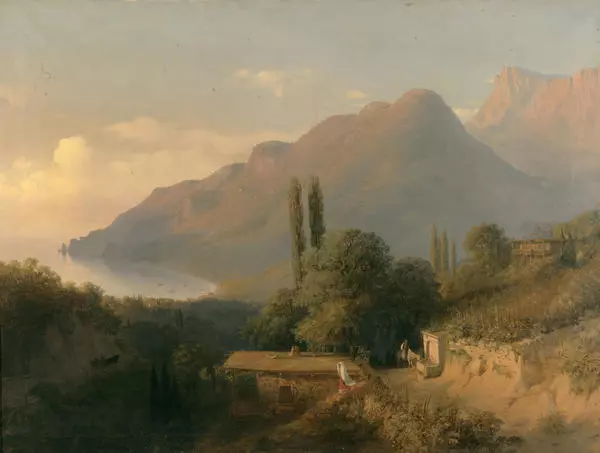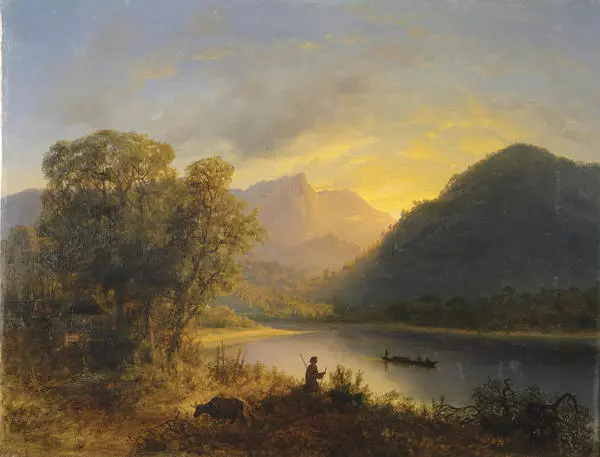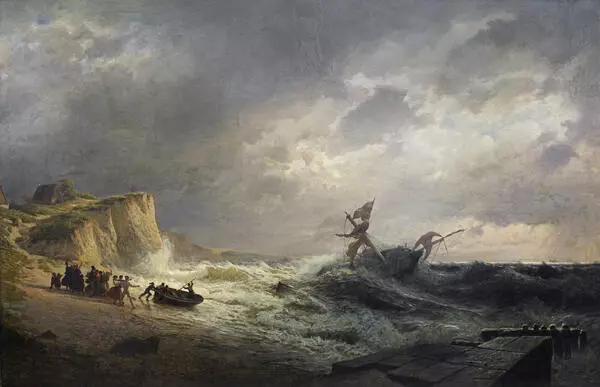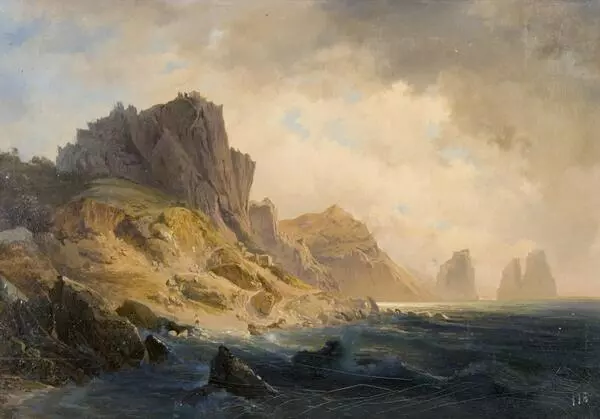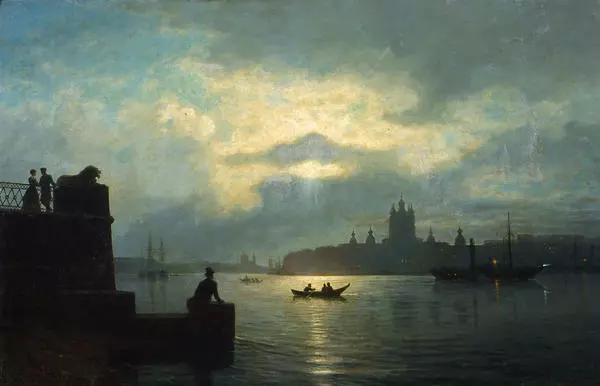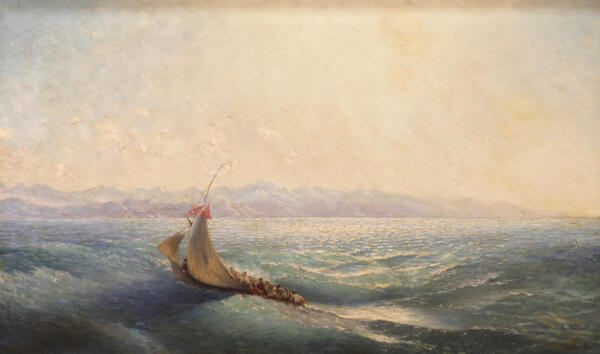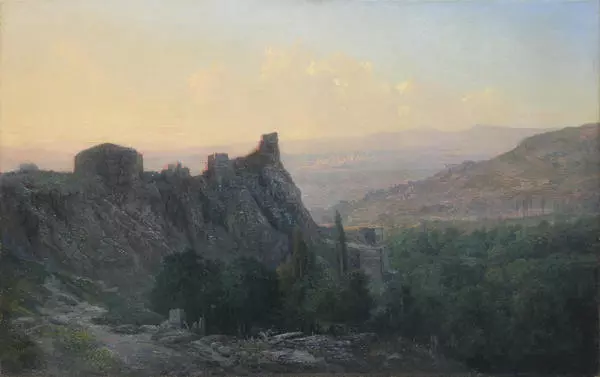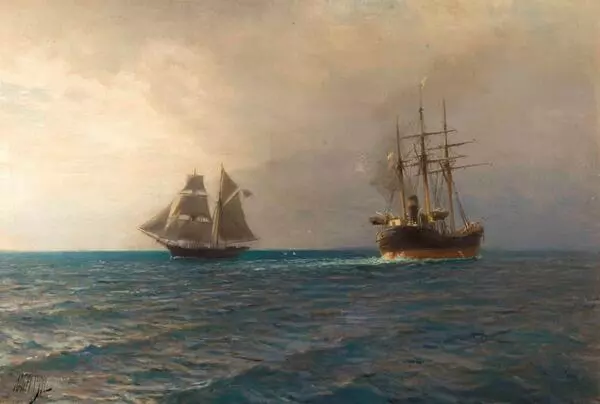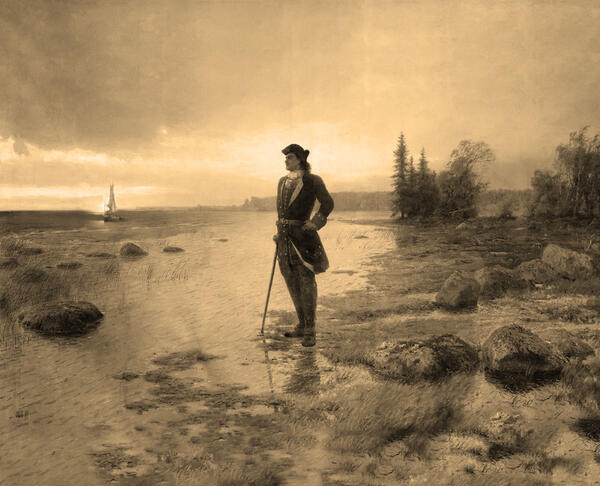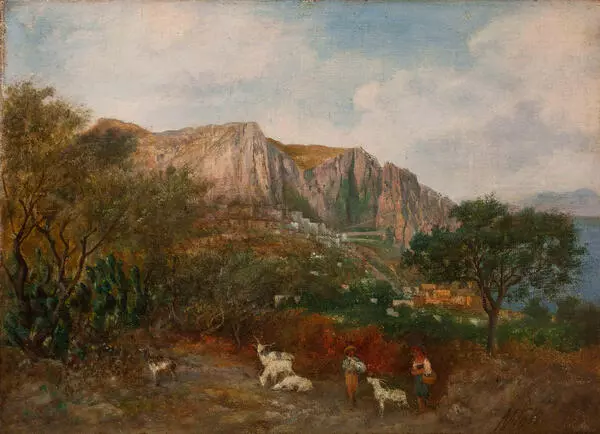The birthplace of Lev Lagorio predetermined his passion for the sea and mountains - the future Russian artist with an Italian surname was born in Theodosia, in the family of the Neapolitan vice-consul. Early manifested artistic inclinations of the boy were channeled into the right direction by I.K. Aivazovsky - his lessons laid the important foundations of painting techniques and, more importantly, strengthened the commitment to the genre of the seascape.
Later on Lagorio continued his studies at the Academy of Arts - the governor of Tavriya, who patronized the talented young man, brought him to St. Petersburg. The novice painter’s teachers were M.N. Vorobiyev and A.I. Zauerveid, later he was trained by B.P. Willewalde.
M. Vorobiyev had a noticeable influence on the artistic style of the student, who perceived and developed the idea of academic romanticism. At the same time, though he was grateful for the professional training that played an important role in his formation as a landscape painter, Lev Lagorio went his own way. The nature of the Caucasus, where he was sent after graduating from the Academy “for painting the local landscapes” became an inexhaustible source of subjects for the painter.
Mountains became the artist’s second love for life after the sea. While working on the Caucasian landscapes, Lagorio successfully used the effect of contrast between the thick shadow of the mountain gorge and brightness of the mountain range lit by the rays of the already set sun. At that period he was preoccupied by the depth of space and the power of light as a means to enhance the impression while conveying the volume.
The tops of the mountains along the coasts of the Black and the Caspian Sea inspired the master to create numerous paintings. Nature in those paintings is perceived as something spiritualized, filled with human emotions - critics noted that the artist rediscovered the beauty of the Caucasus to the audience. And yet the main place in his artistic heritage is occupied by works in the genre of seascape.
In 1853 a new stage of Lev Lagorio’s life began: he followed the footsteps of many Russian artists - to France, then to the homeland of his ancestors, to Italy. The apprentice trip lasted for 7 years, but the return to Russia was a triumph: some of the works presented as the artistic report were acquired by P.M. Tretyakov, and the painter himself was awarded the title of professor of the Academy of Arts.
The painting Fishing stations was painted in 1875. The mirror-like surface pulled by a slight ripple creates the impression of tranquility and rhythmic breath of water. The saggy flag over the fishing lodge, the rower’s relaxed posture - everything suggests that the sea is completely calm. Delicate colors of the sunrise, a blurred ridge of hills in a blue haze - such details, painted out by a loving hand, make the atmosphere of the coming morning almost palpable. It seems that if you strain your hearing, you can hear the soft splash of oars, the lazy squabbling of fishermen pulling the net, amplified by the echo, laughter of the company returning from a night fishing.
You can guess that merchants and officials combined fishing with a friendly feast: their faces flushed, one of them loosened the tie, another leaned freely on the board of the boat. The third character is holding a bottle in his raised hand - uttering a toast, or regretting that it was emptied so quickly. The author watches his characters with a smile, as they are unlikely to bring home a rich catch, but surely they are in quite a complacent mood. Perhaps they are indiscreetly poking fun at the kid in the red shirt and a peak cap - he lowered his head, not knowing what to answer. Despite the somewhat down-to-earth subject, the whole painting is filled with subtle lyrical mood, characteristic of the artist’s manner.
Later on Lagorio continued his studies at the Academy of Arts - the governor of Tavriya, who patronized the talented young man, brought him to St. Petersburg. The novice painter’s teachers were M.N. Vorobiyev and A.I. Zauerveid, later he was trained by B.P. Willewalde.
M. Vorobiyev had a noticeable influence on the artistic style of the student, who perceived and developed the idea of academic romanticism. At the same time, though he was grateful for the professional training that played an important role in his formation as a landscape painter, Lev Lagorio went his own way. The nature of the Caucasus, where he was sent after graduating from the Academy “for painting the local landscapes” became an inexhaustible source of subjects for the painter.
Mountains became the artist’s second love for life after the sea. While working on the Caucasian landscapes, Lagorio successfully used the effect of contrast between the thick shadow of the mountain gorge and brightness of the mountain range lit by the rays of the already set sun. At that period he was preoccupied by the depth of space and the power of light as a means to enhance the impression while conveying the volume.
The tops of the mountains along the coasts of the Black and the Caspian Sea inspired the master to create numerous paintings. Nature in those paintings is perceived as something spiritualized, filled with human emotions - critics noted that the artist rediscovered the beauty of the Caucasus to the audience. And yet the main place in his artistic heritage is occupied by works in the genre of seascape.
In 1853 a new stage of Lev Lagorio’s life began: he followed the footsteps of many Russian artists - to France, then to the homeland of his ancestors, to Italy. The apprentice trip lasted for 7 years, but the return to Russia was a triumph: some of the works presented as the artistic report were acquired by P.M. Tretyakov, and the painter himself was awarded the title of professor of the Academy of Arts.
The painting Fishing stations was painted in 1875. The mirror-like surface pulled by a slight ripple creates the impression of tranquility and rhythmic breath of water. The saggy flag over the fishing lodge, the rower’s relaxed posture - everything suggests that the sea is completely calm. Delicate colors of the sunrise, a blurred ridge of hills in a blue haze - such details, painted out by a loving hand, make the atmosphere of the coming morning almost palpable. It seems that if you strain your hearing, you can hear the soft splash of oars, the lazy squabbling of fishermen pulling the net, amplified by the echo, laughter of the company returning from a night fishing.
You can guess that merchants and officials combined fishing with a friendly feast: their faces flushed, one of them loosened the tie, another leaned freely on the board of the boat. The third character is holding a bottle in his raised hand - uttering a toast, or regretting that it was emptied so quickly. The author watches his characters with a smile, as they are unlikely to bring home a rich catch, but surely they are in quite a complacent mood. Perhaps they are indiscreetly poking fun at the kid in the red shirt and a peak cap - he lowered his head, not knowing what to answer. Despite the somewhat down-to-earth subject, the whole painting is filled with subtle lyrical mood, characteristic of the artist’s manner.


